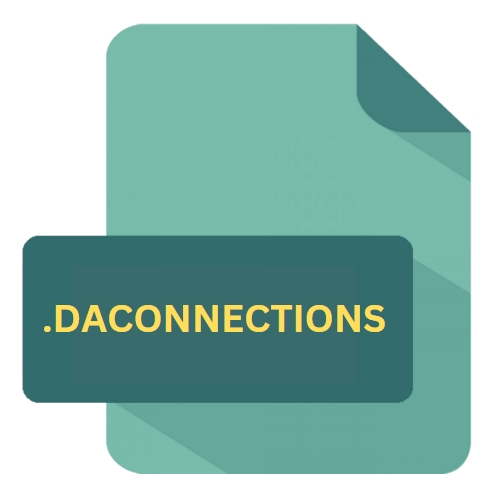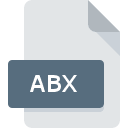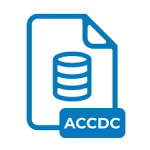.DACONNECTIONS File Extension

RemObjects Data Abstract Connections File
| Developer | RemObjects |
| Popularity | |
| Category | Database Files |
| Format | .DACONNECTIONS |
| Cross Platform | Update Soon |
What is an DACONNECTIONS file?
.DACONNECTIONS files serve as configuration files for RemObjects Data Abstract, storing essential connection parameters required for establishing communication between applications and databases.
These files encapsulate crucial information such as server addresses, authentication credentials, database types, and connection options, enabling seamless integration and interaction between disparate systems.
More Information.
The evolution of .DACONNECTIONS files parallel the evolution of RemObjects Data Abstract itself. In its nascent stages, Data Abstract primarily targeted Delphi developers, offering seamless integration with Embarcadero’s RAD Studio IDE.
As the framework gained traction and expanded its platform support to encompass .NET, Java, and JavaScript environments, the significance of .DACONNECTIONS files transcended specific development ecosystems, becoming instrumental in cross-platform database application development.
Origin Of This File.
The genesis of .DACONNECTIONS files can be traced back to the inception of RemObjects Data Abstract, a comprehensive framework developed by RemObjects Software.
Initially released in 2005, Data Abstract aimed to simplify the complexities of multi-tier database application development across various platforms.
As part of this framework, .DACONNECTIONS files emerged as a standardized means to configure database connections, ensuring consistency and flexibility in application deployment.
File Structure Technical Specification.
.DACONNECTIONS files adhere to a well-defined structure governed by XML standards. Within these files, various elements delineate distinct connection parameters, including:
- Connection Name: A user-defined identifier for the connection.
- Server URL: The address of the database server.
- Database Type: The type of database management system (e.g., SQL Server, MySQL, Oracle).
- Authentication Credentials: Usernames and passwords for accessing the database.
- Connection Options: Additional settings such as timeout durations, connection pooling configurations, and encryption settings.
This structured format ensures clarity, comprehensibility, and ease of configuration, empowering developers to tailor connection settings according to their specific requirements.
How to Convert the File?
Converting .DACONNECTIONS files entails transforming their XML structure into alternative formats compatible with different database management systems or development frameworks. Several methodologies facilitate this conversion process:
- Manual Conversion: Developers can manually extract connection parameters from .DACONNECTIONS files and reconfigure them according to the specifications of the target platform or database system. This approach demands meticulous attention to detail and may be time-consuming for complex configurations.
- Automated Conversion Tools: Specialized software tools or scripts are available to automate the conversion of .DACONNECTIONS files. These tools parse the XML structure, extract relevant parameters, and generate configuration files tailored to the target environment. While expedient, the efficacy of automated conversion tools hinges on their accuracy and compatibility with specific platforms and database systems.
- Migration Utilities: Some database management systems offer built-in migration utilities designed to seamlessly transition connection settings from .DACONNECTIONS files to their respective configuration formats. These utilities streamline the conversion process and ensure compatibility with the target database environment, minimizing manual intervention and potential errors.
Advantages And Disadvantages.
Advantages:
- Centralized Configuration: By consolidating connection parameters into a single file, .DACONNECTIONS streamlines the deployment and maintenance of database connections across multiple applications.
- Platform-agnosticism: .DACONNECTIONS files are platform-independent, facilitating seamless integration across diverse development environments.
- Enhanced Security: Encrypted credentials and secure connection options bolster data security, mitigating the risk of unauthorized access and data breaches.
Disadvantages:
- Complexity: Configuring intricate connection settings within XML files may pose a challenge for novice developers, necessitating a thorough understanding of the underlying syntax and semantics.
- Dependency: Application functionality heavily relies on the integrity and accessibility of .DACONNECTIONS files, making them indispensable components susceptible to corruption or misconfiguration.
- Version Compatibility: Updates or changes to RemObjects Data Abstract may introduce compatibility issues with existing .DACONNECTIONS files, necessitating adjustments or migrations to newer configurations.
How to Open DACONNECTIONS?
Open In Windows
- Integrated Development Environments (IDEs): Use IDEs like Visual Studio, which provide built-in support for viewing and editing XML files. Simply open the .DACONNECTIONS file within the IDE to access and modify its contents.
- Text Editors: Windows-based text editors such as Notepad++, Sublime Text, or Visual Studio Code offer robust XML editing capabilities. Open the .DACONNECTIONS file with your preferred text editor to view and edit its contents.
Open In Linux
- Text Editors: Linux distributions come with various text editors like gedit, Vim, or Emacs, which support XML file editing. Open the .DACONNECTIONS file using your preferred text editor to view and modify its configuration.
- XML Viewer Tools: Install XML viewer tools like XML Copy Editor or XMLStarlet from the package manager of your Linux distribution. Use these tools to visualize and navigate the .DACONNECTIONS file’s structure.
Open In MAC
- Integrated Development Environments (IDEs): macOS users can leverage IDEs like Xcode, which include built-in support for editing XML files. Open the .DACONNECTIONS file within Xcode to view and modify its contents.
- Text Editors: macOS offers text editors like TextEdit or BBEdit, which can handle XML file editing. Open the .DACONNECTIONS file with your preferred text editor to access its configuration.
Open In Android
- Text Editors: Install a text editor app from the Google Play Store, such as QuickEdit or Turbo Editor. Open the .DACONNECTIONS file within the text editor app to view and edit its contents directly on your Android device.
Open In IOS
- Text Editors: iOS users can download text editor apps from the App Store, such as Textastic or Textor. Open the .DACONNECTIONS file within the text editor app to view and edit its contents directly on your iOS device.













